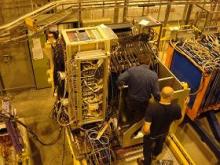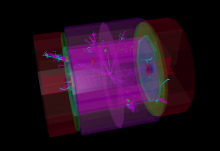 About the Projects
About the Projects
- The next large collider after the LHC is expected to be a electron-positron linear collider (LC). Two possible designs are being considered: the International Linear Collider (ILC) operating at energies of up to 1 TeV and the Compact Linear Collider (CLIC) operating at energies up to 3 TeV.
- A future electron positron Linear Collider (LC) will give particle physicists a facility with which to explore very high energy regimes with unprecedented precision. It is complementary to the Large Hadron Collider and, with LHC discoveries pointing the way, the LC will provide the missing pieces of the puzzle.
- Consisting of two linear accelerators that face each other, the LC will hurl some 10 billion electrons and their anti-particles, positrons, toward each other at nearly the speed of light. The main physics goals will be to study in detail the new physics discovered at the LHC, for example studies of the properties of the Higgs boson and possible Supersymmetric particles.
 Cavendish HEP Group involvement
Cavendish HEP Group involvement
- The group is involved in three Research and Development projects:
- CALICE which is a series of test beam experiments designed to test and develop the calorimetry for a LC detector.
- Particle Flow Reconstruction which is the baseline technique used for the event reconstruction at a LC.
- Physics and Detector design studies for the ILC and CLIC.
- The Conceptual Design Report for CLIC will be produced in early 2012 and Cambridge are leading the detector and physics studies.
- The engineering design reports for the ILC experiments are due in late 2012. The Cambridge group is playing a leading role in this work.
